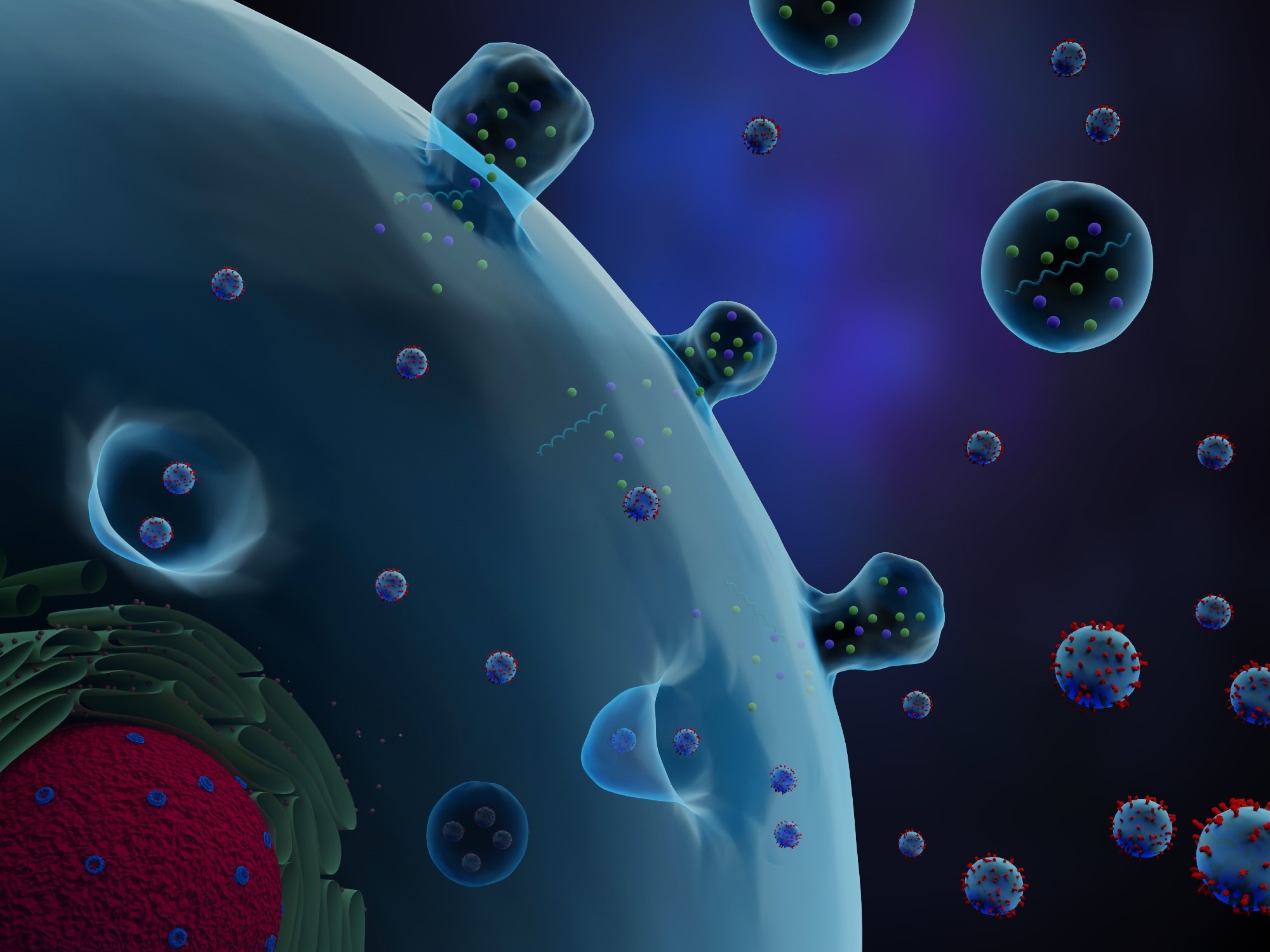Exosomes are lipid-bilayer nanoscale membrane particles with an average size of around 200 nm, which are secreted by many cell types. Exosomes have shown significant potential in the domains of cognitive drug administration and liquid biopsy since they have a naturally generated composition and serve as intercellular communication tools by transferring and delivering biomolecules.

Image Credit: Shutterstock.com/ Meletios Verras
Exosomes are nanoscale in size (30–200 nm), and their buoyant density is low, making it difficult to separate them from complicated biological fluids.
A label-free and biocompatible on-chip magnetic separation system was recently created by a research team under the direction of Prof. Hui Yang from the Shenzhen Institute of Advanced Technology (SIAT), Chinese Academy of Sciences, for the effective extraction of exosomes from the cell culture supernatant.
Lab on a Chip published the study.
Based on the idea of negative magnetophoresis, the researchers, in this study, built a label-free on-chip magnetic separation device. The central component of the system is a magnetic module with an extremely high gradient magnetic field, made up of on-chip magnetic pole arrays, symmetrically distributed permanent magnets, and perm-alloys with high magnetic permeability.
The device can produce an ultra-high magnetic field gradient in microfluidic channels for sample extraction based on the magnetic module.
As a result, it is possible to gather biological samples that are exceedingly tiny (measured in nanometers), and existing approaches have significantly enhanced the ability to discriminate between samples of different sizes.
By using the on-chip magnetic pole arrays, the magnetic field gradient in the microchannel is drastically increased. Therefore, the on-chip negative magnetophoretic separation with size resolution of nanometer is realized using a ferrofluid of extremely low concentration. The viability of the bio-samples is greatly improved in the ferrofluid of low concentration.
Dr. Lin Zeng, Study First Author, Shenzhen Institute of Advanced Technology, Chinese Academy of Sciences
The researchers also provided a biocompatible ferrofluid solution that can satisfy the demands of exosome separation while maintaining their bioactivity. The technique separates exosomes with high purity and high recovery rate utilizing such biocompatible ferrofluid.
The proposed microfluidic system provides potentials for exosome research and exosome-based disease diagnosis and treatment.
Prof. Hui Yang, Shenzhen Institute of Advanced Technology, Chinese Academy of Sciences
Journal Reference:
Zeng, L., et al. (2022) Extraction of small extracellular vesicles by label-free and biocompatible on-chip magnetic separation. Lab on a Chip. doi:10.1039/d2lc00217e.
Source: https://english.cas.cn/